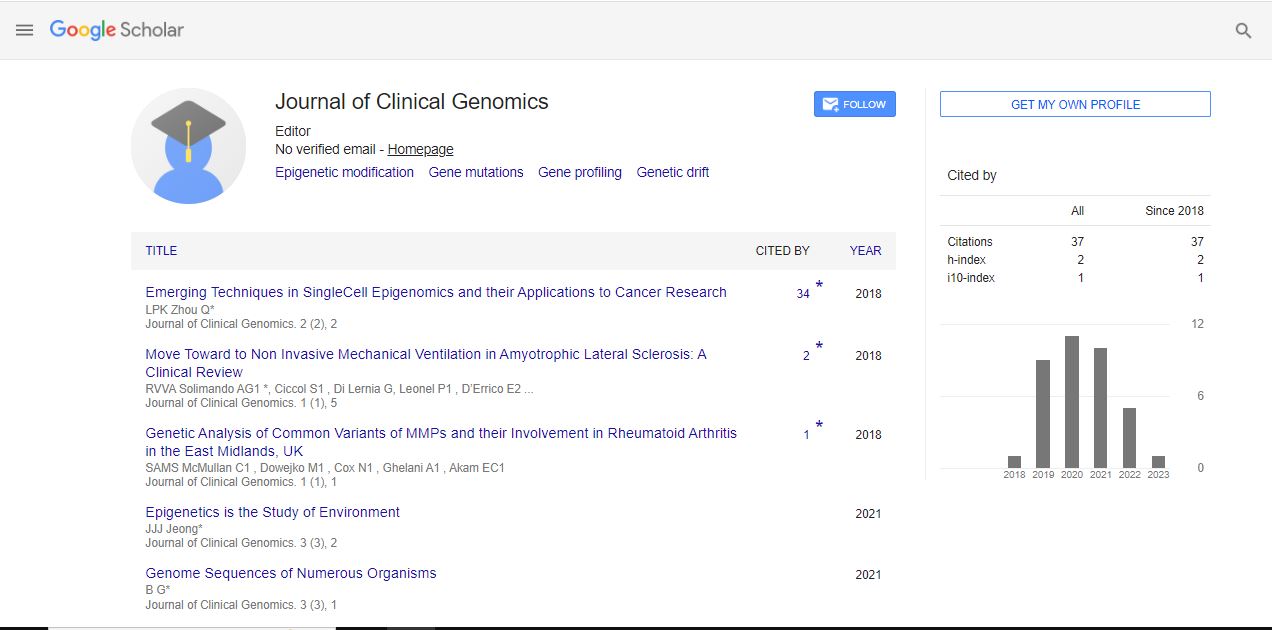Opinion Article, J Chromatography Res Vol: 6 Issue: 1
Advantages and Limitations of Hydrophilic Interaction Liquid Chromatography
Katarzyna Balin*
1Department of Chemistry, University of Bologna, Bologna, Italy
*Corresponding Author: Katarzyna Balin
Department of Chemistry, University of
Bologna, Bologna, Italy
E-mail: katarzyna.balin@mic.it
Received date: 15 February, 2023, Manuscript No. JCGR-23-95906;
Editor assigned date: 20 February, 2023, PreQC No. JCGR-23-95906 (PQ);
Reviewed date: 10 March, 2023, QC No. JCGR-23-95906;
Revised date: 28 March, 2022, Manuscript No JCGR-23-95906 (R);
Published date: 07 April, 2023, DOI: 10.4172/jcgr.1000047.
Citation: Balin K (2023) Advantages and Limitations of Hydrophilic Interaction Liquid Chromatography. J Chromatography Res 6:1.
Keywords: Hydrophilic Interaction Liquid Chromatography
Description
Hydrophilic Interaction Liquid Chromatography (HILIC) is a powerful analytical technique that has gained popularity in the past decade. HILIC separates polar and hydrophilic compounds based on their interaction with a polar stationary phase and a less polar mobile phase. Liquid chromatography is a widely used separation technique in analytical chemistry. In liquid chromatography, the sample mixture is separated based on the differential partitioning of its components between a stationary phase and a mobile phase. This is an attractive technique for the separation of polar and hydrophilic compounds that are difficult to separate using other chromatographic techniques. In HILIC, the stationary phase is typically a polar material, such as silica or zwitterionic compounds. The mobile phase is usually a less polar solvent, such as acetonitrile or methanol, containing a polar modifier, such as ammonium acetate or formate. The polar stationary phase interacts with the polar functional groups of the analytes, while the less polar mobile phase facilitates the elution of the analytes. During the chromatographic separation process, the polar analytes in the sample will partition into the aqueous mobile phase, while the nonpolar analytes will remain in the stationary phase. This results in a separation of the polar analytes based on their degree of polarity, with more polar compounds eluting earlier and less polar compounds eluting later. In addition to partitioning, HILIC also involves adsorption, which occurs when polar analytes interact with the hydrophilic functional groups on the stationary phase. The strength of this interaction is influenced by the type and amount of functional groups on the stationary phase, as well as the polarity and ionic strength of the mobile phase.
HILIC has been widely used in the separation and analysis of compounds, including nucleotides, amino acids, peptides, oligosaccharides, glycopeptides, glycolipids, and polar metabolites. It has also been used for the analysis of pharmaceuticals, natural products, and environmental samples. It is particularly useful for the analysis of complex mixtures containing polar and hydrophilic compounds that are difficult to separate using other chromatographic techniques. HILIC has evolved over the years, and several advancements have been made to improve its performance. One of the significant advancements is the development of zwitterionic stationary phases, which exhibit both positive and negative charges and have a unique selectivity for polar and hydrophilic compounds and monolithic columns, which offer higher efficiency, lower backpressure, and faster separations than traditional packed columns. Other advancements include the use of alternative polar modifiers, such as trifluoroacetic acid and perfluorinated acids, and the development of multidimensional HILIC techniques. HILIC offers several advantages over other chromatographic techniques. HILIC is also compatible with mass spectrometry, which allows for the identification and quantification of analytes with high sensitivity and selectivity. HILIC also offers a broader range of selectivity than other chromatographic techniques, allowing for the separation of a wider range of analytes. HILIC has a few limitations. One of the limitations is the potential for strong ionic interactions between the stationary phase and the analytes, which can lead to peak tailing or retention time shifts. Another limitation is the sensitivity of HILIC to changes in the mobile phase composition, which can affect the retention and selectivity of the analytes. HILIC also requires careful optimization of the mobile phase composition and column temperature to achieve optimal separations.
 Spanish
Spanish  Chinese
Chinese  Russian
Russian  German
German  French
French  Japanese
Japanese  Portuguese
Portuguese  Hindi
Hindi 